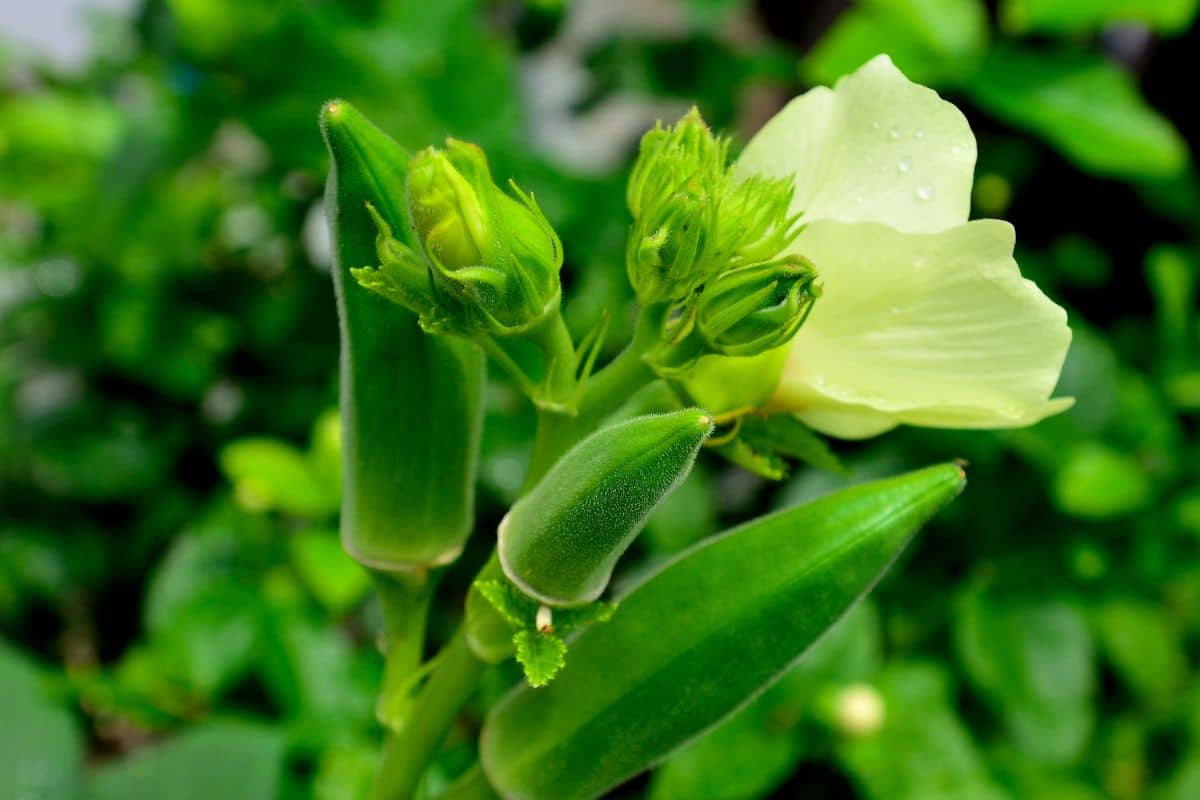Okra, also known as lady’s finger, thrives when grown alongside specific companion plants that enhance its growth and protect it from pests. This heat-loving vegetable benefits from strategic planting partnerships that create a healthier garden ecosystem while maximizing your harvest potential.
Understanding which plants work well with okra can transform your vegetable garden into a productive and balanced growing space. Companion planting strategies have been used for centuries to naturally improve soil conditions, deter harmful insects, and optimize space utilization in home gardens.
Best companion plants for okra cultivation
Tomatoes and peppers make excellent companions for okra plants because they share similar growing requirements and soil preferences. These nightshade family members enjoy the same warm temperatures and well-draining soil conditions that okra needs to flourish. The tall okra stalks provide beneficial shade for pepper plants during the hottest parts of summer days.
Basil plants offer natural pest control benefits when grown near okra. This aromatic herb repels aphids, spider mites, and other common garden pests that frequently attack okra leaves and pods. How to keep your basil plant alive becomes crucial knowledge since healthy basil provides continuous protection throughout the growing season.
Leguminous crops like beans and peas create nitrogen-rich soil conditions that benefit okra’s heavy feeding requirements. These plants fix atmospheric nitrogen through their root systems, naturally fertilizing the surrounding soil. Plant bush beans or pole beans near okra rows to establish this beneficial relationship.
Cucumber vines complement okra plantings by utilizing different soil levels and growth patterns. While okra grows vertically, cucumbers spread horizontally, maximizing garden space efficiency. Both crops appreciate similar watering schedules and soil moisture levels, making garden maintenance more straightforward.
Marigold flowers serve as natural pest deterrents around okra plants. However, certain flowers can actually harm vegetable crops, so careful selection remains important. Understanding flowers you should ban from your vegetable garden helps preserve crop health and prevents potential growth problems.
Plants to avoid near okra
Fennel plants should never be grown near okra because they release allelopathic compounds that inhibit growth in neighboring vegetables. These natural chemicals can significantly reduce okra pod production and overall plant vigor throughout the growing season.
Walnut trees pose another serious threat to okra plants due to juglone production. This toxic compound prevents proper root development and can kill okra plants within weeks of exposure. Maintain at least fifty feet distance between okra plots and mature walnut trees.
Certain brassica family members like broccoli and cabbage compete aggressively for soil nutrients that okra requires. These heavy feeders can deplete essential minerals and organic matter, leaving okra plants struggling to develop properly. Root competition becomes particularly intense in smaller garden spaces where plants are closely spaced.
Sunflowers create excessive shade that reduces okra’s photosynthetic capacity and pod development. While these tall flowers look attractive, they block essential sunlight that okra needs for optimal growth and fruit production. Choose lower-growing companion flowers instead.
Creating optimal growing conditions with companions
Soil preparation becomes easier when companion plants work together to improve growing conditions naturally. Deep-rooted okra plants benefit from shallow-rooted companions that don’t compete for the same soil layers. This vertical root distribution creates better nutrient uptake and water absorption patterns.
Pest management strategies improve dramatically when diverse plant combinations create natural deterrent systems. Aromatic herbs like oregano and thyme release volatile oils that confuse pest insects and reduce infestations on okra plants. These companion herbs also attract beneficial predator insects that control harmful pest populations.
Water management becomes more efficient with proper companion planting arrangements. Plants with similar moisture requirements can share irrigation systems and mulching strategies. Drought-tolerant companions help conserve water while maintaining consistent soil moisture levels around okra roots.
Even small spaces can accommodate okra companion planting systems. Container gardens and raised beds benefit from strategic plant partnerships that maximize production in limited areas. Learning how to make an office garden provides valuable insights for small-space growing techniques.
Here are the most beneficial okra companions ranked by effectiveness :
- Basil for natural pest control
- Tomatoes for shared growing requirements
- Beans for nitrogen fixation
- Peppers for space efficiency
- Marigolds for pest deterrence
Maximizing okra harvest through strategic partnerships
Succession planting with companion crops extends harvest periods and improves overall garden productivity. Plant quick-growing crops like radishes between okra rows during early spring, then replace them with heat-tolerant companions as temperatures rise.
Natural fertilization systems develop when nitrogen-fixing companions support okra’s heavy nutrient demands. Compost tea applications become more effective when combined with legume companion plantings that continuously enrich soil biology.
Harvest timing coordination allows gardeners to maximize fresh produce availability throughout the growing season. Early-maturing companions provide fresh vegetables while okra plants establish strong root systems and begin pod production. Staggered maturity dates ensure continuous harvests from midsummer through first frost.
Disease prevention improves significantly when diverse plant species create balanced garden ecosystems. Monoculture plantings increase disease pressure, while companion diversity breaks pest and pathogen cycles naturally. Healthy soil biology develops more effectively in diverse planting systems than in single-crop gardens.

